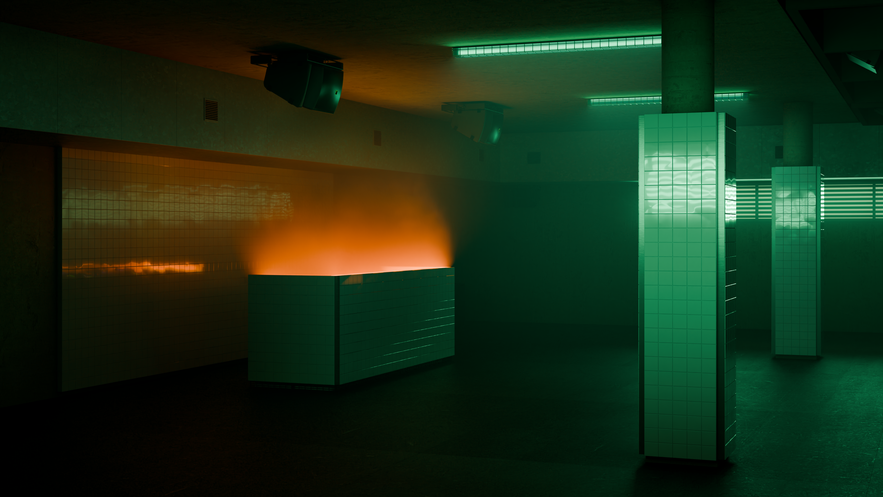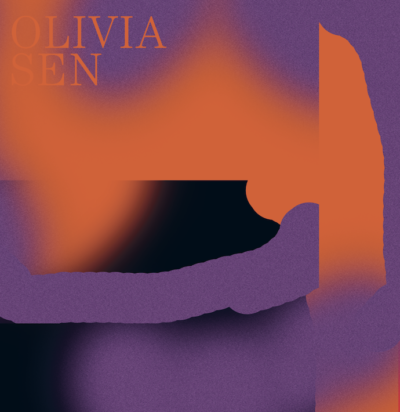After reshaping the trajectory of electronic music in France in the 2010s by creating the Concrete institution and inspiring a generation of clubbers, artists, and promoters for nearly a decade, its technical and production director Jonathan Malaisé and its founder and artistic director Brice Coudert are teaming up with David Bossan and Tommy Gin to give birth to Essaim: a new space dedicated to modern music and designed to become the new hub for a scene with cutting-edge musical tastes and a purist, open minded audience.
Located in the heart of Paris (within the former Club Carbone and Bisou Club), between Gare du Nord and Gare de l’Est but sheltered from main thoroughfares and transient crowds, the determined and passionate team behind this new project is carefully defining and constructing a new space. With a human-scale capacity (400 people), it will allow them to elevate the quality of the experience to a level rarely seen in Paris.
Recently, we had the opportunity to chat with Brice Coudert, the visionary behind Essaim, a venue which aims to cultivate “a new, smaller and more devoted scene.”

What inspired you to create Essaim, and how does it build upon your past experiences in shaping Paris’ nightlife?
10 years ago, with Concrete, our goal was to bring our culture to a wider audience, to give visibility to our music and our artists, and to build a real scene while retaining the full essence of our music. Today, the situation is the opposite… The audience has grown massive, and as a result, it consists largely of people with little knowledge of club culture and, above all, very little musical curiosity.
The idea with Essaim is to take advantage of the venue’s small size (400 people) to develop a project aimed at an audience naturally filtered by a refined, sometimes adventurous line up. This creates an environment that is completely different from the standards of today’s large clubs.
We want to build a new, smaller and more devoted scene. And offer the people a HQ. Clubs like Plastic People, De School, or the brand-new German club Openground have been significant sources of inspiration and motivation for us.

The club’s design seems to place a lot of emphasis on the connection between the artists and the audience. Can you tell us more about how the architectural decisions, especially regarding the DJ booth and the dancefloor layout, and the sound system, were made with this connection in mind?
We see a party as a dual performance, where both the artist and the dancers play their part.Together with our architect Dorothée Hachiken, we wanted to create an environment that is comfortable, harmonious, and immersive, both technically and visually. This applies equally to the DJ booth and the dance floor, ensuring that artists and dancers both connect in the best possible conditions.
The DJ booth is the heart of our parties. Positioned at ground level and subtly backlit, it functions more as a cockpit steering the dance floor—fully integrated into it and placing DJs and the audience together on shared ground—rather than a stage towering above the crowd.
For the sound, we worked closely with specialists to refine the room’s acoustics, optimize the positioning, and fine-tune our L-Acoustics system, resulting in a powerful yet smooth, nuanced, and balanced system throughout the entire space.
You’re taking care of Essaim’s programming together with Antoine Hernandez. What kind of musical journey do you hope to offer the audience through this collaboration?
You know most French clubs are used to mainly work with promoters and letting them decide their line-ups, but we made the choice to offer a 100% in-house musical program. We wanted Essaim to be defined by a coherent and personal musical direction shaped by us, and aligned with our values and tastes.
Both Antoine and I have a lot in common as curators. We’re both driven by a relentless passion for underground music, very curious, and not stuck in the past. But we also each have our own specialties: club, techno, and house for me – bass, breaks, and more experimental sounds for Antoine.
We’re gonna be very flexible in terms of sonorities, but one thing’s for sure. Essaim will be the right place to discover the best artists and those you’ve rarely seen anywhere else in Paris.

Essaim seems to stand apart from other Parisian venues with its focus on a more intimate, minimalistic approach to visuals and lighting. What is the role of lighting and visuals in your design, and how do you think it contributes to the overall vibe of the club?
We wanted to break away from the usual club light shows, avoiding all sharp beams, blinding effects, or even overused all-red atmospheres, which felt a bit too cliché for us.
The words ‘cocoon’ and ‘living room’ frequently came up during our discussions with our architect, with whom I shared several trips to the Labyrinth festival in Japan. These experiences inspired us to create a more static lighting atmosphere, featuring a succession of color compositions that alternate between warm and cool tones, always softened by a generous haze from smoke machines. The idea is to immerse people in a colorful mirage—pleasant yet intense—while clearly distinguishing ourselves from other clubs.
You’ve been a significant force in shaping the French electronic music scene over the last decade. Looking ahead, how do you envision Essaim contributing to the evolution of Paris nightlife and the wider global electronic music community?
We simply want to set up a new club standard in Paris, designed for an audience that is a little bit more mature both artistically and in terms of club culture. The initial idea was simply to create the kind of venue we ourselves would want to have available every weekend to party.
Beyond the programming, design, sound, and lighting, we’ve placed great emphasis on how we welcome our community. This includes a very kind and passionate team (including the security staff), highly affordable bar prices, and a meticulous approach to build the safest space possible . Our ambition goes beyond the artistic aspect. We really aim to fully embrace everything the term “club” represents in its most complete sense.

Scenography : Dorothée Design Studio
Images : Studio Tekkin
Graphic design : Loïc Berger
Follow Essaim Here
Follow Brice Coudert Here
more TALK features here
Interview : Grzegorz Bacinski
Get our latest print 350page + book







